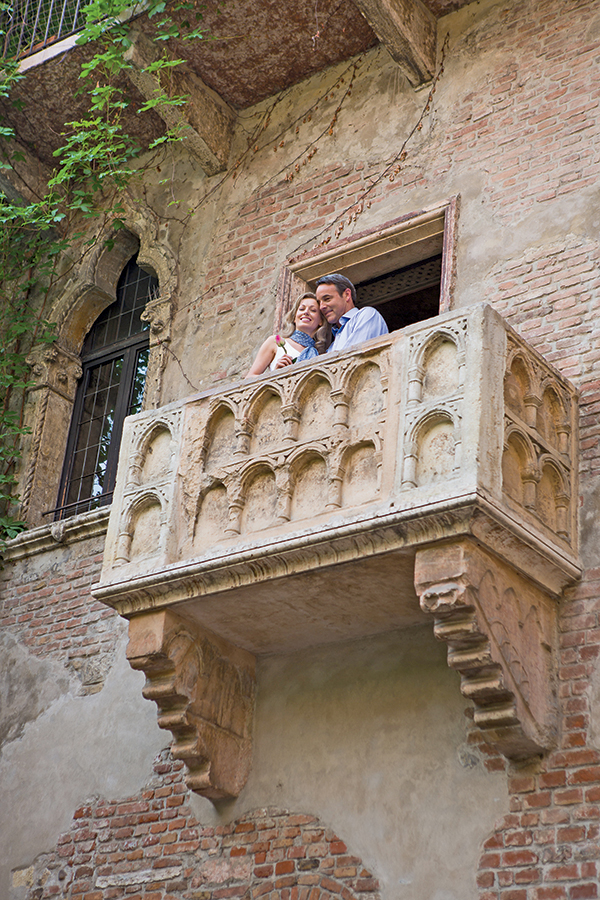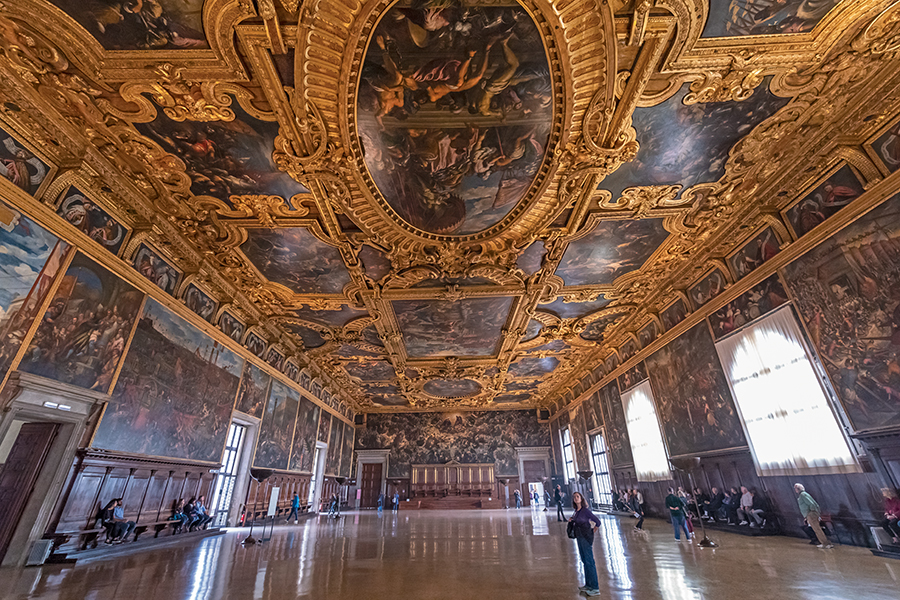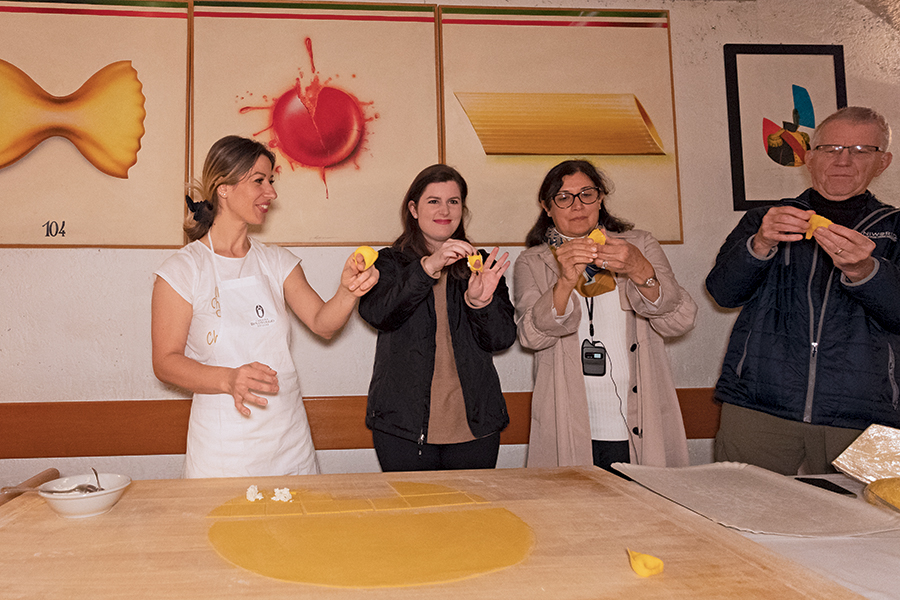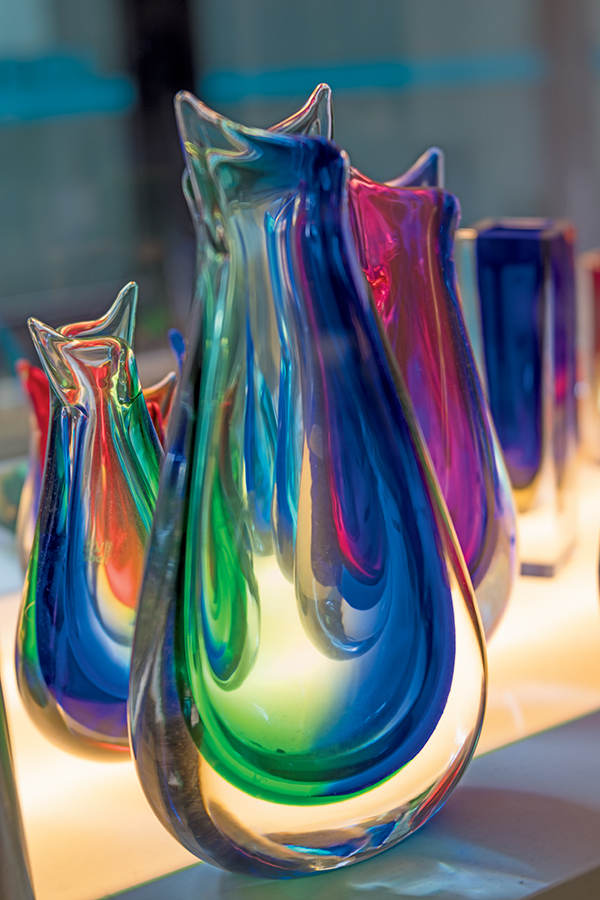Gems of Northern Italy: River of dreams

The S.S. La Venezia sails by the Campanile and St. Marks Square in Venice, Italy. © Kerrick James
South of the soaring Dolomites in the Italian Alps are two world-class cities, Milan and Venice, which could not be more different in setting. My exploration of Uniworld River Cruise’s “Gems of Northern Italy” begins in Milan. The city may be 2,300 years old, but today it’s a modern mecca for fashion, commerce, and distinctive Italian style.
Discovering Milan
With just two nights and one full day here, we start right after breakfast on a guided walking tour of the city highlighting its architectural wonders, such as Il Duomo, a cathedral with a spectacular, yet controversial, Gothic facade 600 years in the making; and then into the Grand Galleria Vittorio Emanuele, an elegant glass-vaulted 1870s arcade that’s Italy’s first shopping mall, and home to luxury upscale retailers like Prada. Next, we stroll to Piazza Della Scala, home of the Teatro Della Scala opera house, where all the greats have sung, and we cap off our tour with a few moments to admire DaVinci’s “The Last Supper,”—a delight for everyone.
After the tour we have some free time, and I want to see more of DaVinci’s legacy, so I make my way over to the National Museum of Science and Technology bearing his name. Three hours speed by as I soak in the genius of DaVinci in the great gallery, full of immense displays of his drawings, art, and 170 historical models. The Museum closes at 5 p.m., so don’t delay. That evening some of our guests take in an opera at La Scala, but I opt for a rich dinner close by our stylish, modern hotel. My first day in Italy was packed with art, history, and brilliant design at every step. Milan is a treasure house, and I will return to soak in more.
Our journey begins

Couple stands on the famed balcony of Shakespeare's Romeo & Juliet in Verona, Italy. Courtesy of Uniworld River Cruises
After far too short a time in Milan, we journey east by motorcoach, stopping in Verona for a guided walking tour in the city of Romeo and Juliet. The tales of deadly family feuds and star-crossed lovers stir the heart, and several of us take in the view of Verona from Juliet’s balcony. Our afternoon is spent roaming the verdant Valpolicella wine country, lunching merrily at the gorgeous Serego Alighieri estate, where the descendants of the poet Dante (The Inferno) make fine red wines for the world. This is a relaxing, dreamy day, but anticipation is building for seven days cruising the “Queen of the Adriatic.”
That evening we arrive at last in Venice, a city I’ve dreamed of for years. I pictured it from great literature, falling in love with this impossible city long before I ever glimpsed its towers, domes, plazas, and beckoning bridges. Seeing it for the first time was an epiphany, a city awash in history, art, architecture, and beauty. It’s impossible to truly envision or ever forget. Why did I wait so long?
Venice is a serpentine maze of alleys they call streets, and getting lost and found is par for the course. Taking the vaporetto (water bus) from the airport really puts the “lug” in luggage, if you’re dragging your bags from water’s edge over countless bridges and through crowds. It’s exhausting!
Instead, I choose a better way to relax and enjoy my time by booking a cabin on the S.S. La Venezia—a river cruiser that would be my floating mobile hotel. It has a spa, a glorious library, and several gifted bartenders at our beck and call. What better way to explore the islands and lagoon of Venice for seven glorious days?
After boarding our opulent longboat, I settle into my stateroom, then stroll the sun deck, and watch small boats stream by our berth. Venice is a sailor’s city, with thousands of boats and very few roads. Captain Stefano announces that we’ll cruise the main channel during dinner, so we glide by St. Mark’s Basilica under a moonless sky, dining on quail and saffron gnocchi, and watching the crowds thronging the great plaza. This sumptuous dinner portends a week of inspired flavors, a Uniworld tradition.
Exploring the labyrinth
Venice is a walkabout treasure hunt, so wear comfortable shoes and bring a shoulder bag for discoveries. On our first morning, we disembark and split 117 passengers into five groups to explore San Marco and Castello sestieres (districts). Our guide Corrine is a spirited Venetian lady, speaking excellent, accented English with a gift for phrases like, “In Venice we walk in bridges” (a measure of distance). Venice has 210 pedestrian bridges crossing 150 canals, and needs every one. “Everything is tilting in Venice,” extolls Corrine as we near the Campanile, a 325-foot landmark tower overlooking St. Mark’s Square. Why? The city was built on glacial silt and sand, and the pilings have sunk 25 feet into the soft delta.
The city’s architecture is a blend of Venetian Gothic, High Renaissance, and Baroque styles, with Islamic and Byzantine influence. The Doge’s Palace is a prime example of Venetian Gothic. Corrine narrates an incredibly detailed tour through immense chambers with ceilings painted by the Masters. She regales us with tales of Venice’s origins, excesses, power plays, and personalities.
Our first full day in Venice is capped with two special treats: first, a water taxi ride at night to St. Mark’s Square, and then a wondrous private tour of its world-famous Basilica—a unique Uniworld-only experience. As the only people in this vast structure, we were enveloped in a cave of gold, with mosaics, murals, and sweeping paintings bordered in gilt. Susan Steer, our ship’s Art Historian, artfully intones the backstory of St. Mark’s Basilica. From early creative myth to the “pious theft” of St. Mark’s corpse being smuggled to Venice, her droll and witty delivery is worth the price of the trip itself. We are enthralled, as Susan describes the most prominent biblical scenes, interpreting key panels, and sharing her arresting evocation of St. Mark and other icons. To think that this, the Chiesa d’Oro (Church of Gold), was built atop a muddy marsh is simply unbelievable.
Island hopping
Venice is much more than just its 118 islands, and we spend several days exploring it from our new mooring at Chioggia, an island port southeast of Venice, loved by fisherman, artists, and anyone looking for unique gifts or souvenirs.
We cross a bridge into town, through a voluminous fish market to a church with a bell tower, offering views of the Adriatic and the great lagoon. Guffawing gulls swoop and swirl as we stroll past the public market lined with tents stuffed with clothes, boots, leather goods, and local treats. This is genuine Italy. I revel in the energy here and the intriguing faces of the locals.
The next day, we cruise the River Po to Bologna—Italy’s capital city of food. It’s bustling and urbane, with the requisite old town at its core. Forty-five kilometers of arched porticos shield its stylish citizens from sun and rain. We embark on a guided walking tour around a great plaza, and into the enclosed food markets of the Quadrilatero. Afterwards, we have time to wander, explore, and shop on our own. Our appetites awaken, so we head to the Cantina Bentivoglio, a sunken restaurant with mood lighting. Here, we hungrily observe fresh pasta being made from scratch, filled with cheese, mortadella, and fresh ingredients. Lovely Aida, who made our meal, even shared their time-honored recipes for making tagliatelle and traditional Bolognese ragu, which I gratefully took home.
After days exploring the islands around Chioggia, we cruise back to the heart of Venice, where I crave the shaded, narrow streets that remind me of Southwestern slot canyons. Only here, the “canyon walls” are studded with “caves” bearing creations of leather, glass, and precious metals, and the landscape is riven by streams. In truth, they’re canals of varying widths, arterials coursing with the commerce, and personal lives of its 52,000 full-time inhabitants.
My dinner that night on board was melt-in-your-mouth veal paired with an elegant Italian Pinot Noir. We’re a very happy set of passengers, feted by the friendly and attuned chefs and servers. On a ship this size we make friends quickly, learning each other’s names, and I’m intrigued by how many of the passengers have cruised the rivers of Europe.
The next day, it’s off for more island hopping—from Torcello to Mazzorbo to Burano. Sleepy Torcello predates Venice, and features the oldest church in the lagoon. Mazzorbo hides a wine estate, where we taste the golden Dorana wine, a miracle liquid given the salt air and occasional high tides. The afternoon is in colorful Burano, painted in rainbow hues, and known for intricate lace-making. Here, we get to visit the workshops of this 400-year-old tradition.
Our final day offers a choice of a morning walking tour of the Rialto food markets with the Executive Chef, paired with Venetian tapas and Prosecco; Susan Steer’s invaluable evocation of the painting masters at the Galleria Accademia; or strolling the Dorsoduro sestiere to the Ca’ Macana mask-making shop. In the afternoon, a private boat takes us to Giudecca to shop the rich collection of Murano hand-blown glass.
Arrivederci
Venice has endured a long life as a city-state of great influence and suffocating wealth. Even if one day it’s swallowed up by the Adriatic, Venice will be immortal in world history and consciousness, a lingering watercolor dream, an illusion of beauty destined to be a future Atlantis. Let us hope not.
Until then, I will dream of returning, as there are more sestieres, plazas, and streets to wander. I will again stay onboard the S.S. La Venezia, which had the dreamiest bed I’ve slept in on my 25-plus cruises. Plus, between the carnaval cat-faced mask I bought on my last day, and having a dignified and wise private butler to dote on me is a slice of Venice I will always savor.







